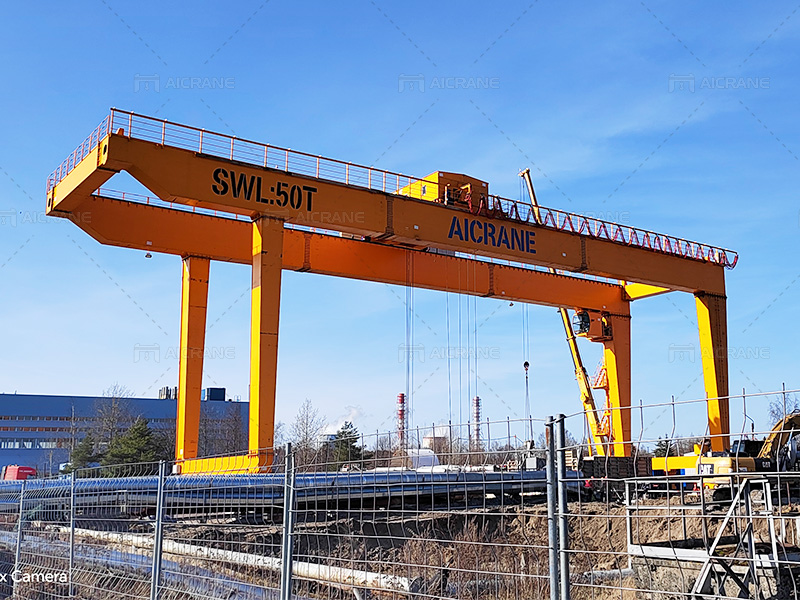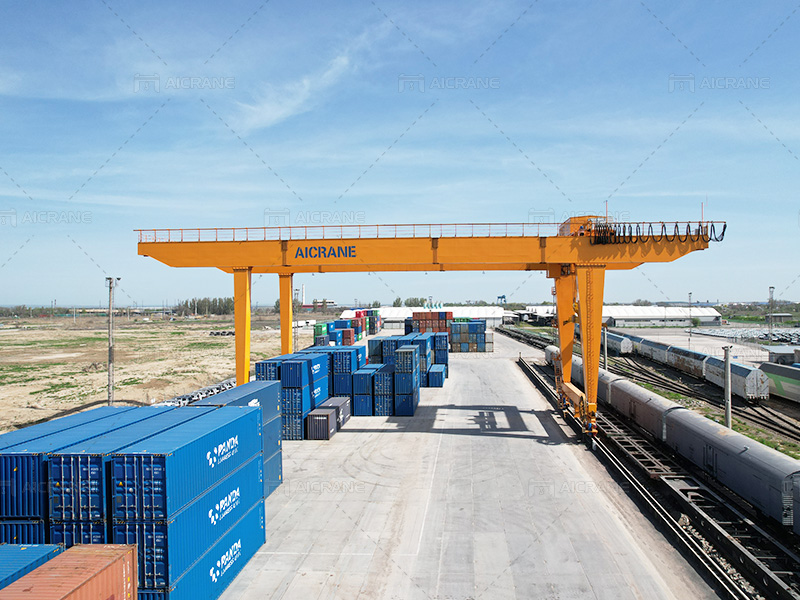In the realm of heavy industrial equipment, gantry cranes stand as towering giants, crucial for lifting and transporting heavy loads across vast distances within factories, shipyards, and construction sites. These massive structures are pivotal to operational efficiency and safety in various industries, from steel production to logistics. However, their effectiveness is often hampered by the inherent challenge of load sway, which can significantly impact productivity and pose safety risks. Anti-sway mechanisms have emerged as indispensable technologies in mitigating this issue, enhancing both performance and safety of heavy duty gantry cranes.

Understanding Heavy Duty Gantry Cranes
Gantry cranes are characterized by their overhead structure supported by legs or wheels that run on rails. They are designed to handle exceptionally heavy loads, often in the range of hundreds of tons, and are essential in environments where precision and reliability are paramount. These heavy duty gantry cranes consist of a hoist mechanism mounted on a bridge that spans the width of the gantry, allowing for lateral movement of loads across a broad area.
The Challenge of Load Sway
Load sway, or pendulum motion, occurs when a suspended load oscillates due to external forces such as wind, crane movement, or operator error. In gantry cranes, this phenomenon is particularly problematic during high-speed operations or when handling delicate or irregularly shaped objects. Load sway not only slows down operational efficiency but also poses risks to personnel and equipment integrity.
Introduction to Anti-Sway Mechanisms
Anti-sway mechanisms are technological solutions designed to minimize or eliminate load sway in gantry cranes. These systems employ various sensors, algorithms, and actuators to stabilize the load during lifting and movement processes. By continuously monitoring and adjusting the position and speed of the load, anti-sway mechanisms enhance precision and control, thereby optimizing crane performance.

Types of Anti-Sway Mechanisms
- Sensor-Based Systems: These systems utilize sensors, such as accelerometers and gyroscopes, to measure the movements and position of the load. The data gathered is processed in real-time to calculate the optimal path and speed adjustments required to counteract sway.
- Feedback Control Algorithms: Advanced algorithms analyze sensor data and generate corrective actions to minimize sway. These algorithms are often integrated into the crane’s control system, enabling seamless coordination between hoist, trolley, and bridge movements.
- Active Damping Systems: Some gantry cranes employ active damping techniques, where actuators are used to apply counteracting forces directly to the load. These systems dynamically stabilize the load by reacting to sway in real-time, offering precise control and stability.
Benefits of Anti-Sway Mechanisms
Implementing anti-sway mechanisms in heavy duty gantry cranes provides several key benefits:
- Enhanced Safety: Minimizing load sway reduces the risk of accidents and injuries caused by swinging loads.
- Improved Efficiency: By reducing sway-induced downtime and delays, productivity is increased, leading to faster turnaround times in operations.
- Precise Handling: Anti-sway mechanisms enable more accurate positioning of loads, particularly beneficial when working in confined spaces or during complex maneuvers.
- Extended Equipment Lifespan: The controlled movement facilitated by anti-sway systems decreases wear and tear on crane components, thus extending the operational lifespan of the equipment.
Real-World Applications
Heavy duty gantry cranes equipped with anti-sway mechanisms find application in various industries:
- Steel Mills: Crucial for handling molten metal ladles and heavy steel coils with precision.
- Shipbuilding: Used in the assembly of large ship components and movement of ship hulls during construction.
- Container Terminals: Facilitate efficient loading and unloading of shipping containers from vessels to storage yards.
Future Developments
As technology advances, anti-sway mechanisms continue to evolve. Future developments may include:
- Integration of artificial intelligence for predictive sway control based on historical data and environmental factors.
- Enhanced connectivity and remote monitoring capabilities, allowing for real-time adjustments and proactive maintenance.
- Adoption of lightweight materials and advanced actuators to improve efficiency and reduce energy consumption.
Conclusion
Anti-sway mechanisms represent a critical advancement in the field of heavy duty gantry cranes, addressing the inherent challenges of load sway while enhancing operational safety, efficiency, and precision. As industrial demands grow and technological innovations accelerate, these mechanisms will play an increasingly pivotal role in shaping the future of material handling and logistics across diverse sectors. By harnessing the power of advanced control systems and sensor technologies, gantry cranes equipped with anti-sway mechanisms are poised to deliver heightened performance and reliability in the global industrial landscape. To learn more, visit https://steelmillcranes.com/